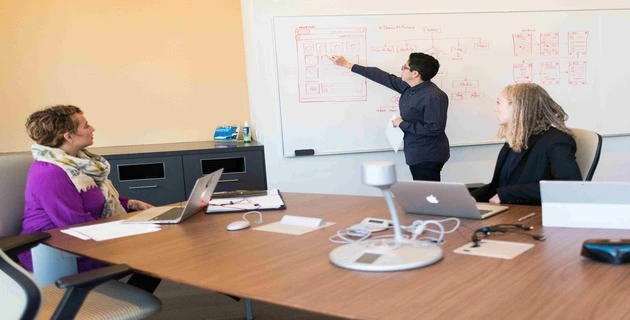How to improve your businesses Software Maintenance?
When it comes to software development, time is money. There are several things that companies and organizations can do to help reduce all costs when it comes to developing software or applications.

By Iffy Kukkoo
07 Aug, 2023
When it comes to software development, time is money. There are several things that companies and organizations can do to help reduce all costs when it comes to developing software or applications.
A survey in 2019 conducted by Tidelift suggested developers spent more time maintaining their code than initially writing it. Maintenance regarding software is one of the stages defined in the “Software Development Lifecycle,” with its primary purpose being to update bugs and improve performance across newly developed software and applications.
Software always needs new features and bug fixes. Maintaining your software is easy to do and can be cost-effective if done right.
What is Maintainable Software?
The maintainability of software depends on certain factors in development, but you must first understand your software inside out. What does it do? Why does it work the way it does? Once this has been established, it will be much easier to find what needs to be changed regarding bugs and how to make those changes.
What are the benefits of having maintainable software?
● You're able to fix bugs without introducing more bugs in the process of finding a solution.
● Add new features to your software without introducing any more bugs or problems.
● Improve the usability of your application.
● Increase the performance of your application.
● Make fixes that prevent future bugs from occurring once more.
● Make changes to your software that supports new environments, operating systems, or tools that can be integrated.
● Bring on more developers without having problems regarding upskilling or learning about the software.
Here are some initial thoughts on how you can improve your software maintenance process:
Make Sure to Listen Out for Your IT Help Desk
In terms of real-time management regarding your application, your help desk can become your best friend. When using the application, users will be able to submit support tickets, questions, and problems about the developed software.
The staff working at the help desk will then receive these tickets directly concerning the problematic areas that users have found. A help desk is a great way to connect with your customers and provide insights into your application. You're then able to make evaluations on what can be improved.
While the tickets can also help with existing problems, they can also ensure that the same bugs do not occur again.
Engage in Quality Assurance for your Software
It's often that developers always rush their code to market. This means that only small and limited testing is completed before the software is placed in the customer's hands.
Once the application goes live, there should be weeks of testing and troubleshooting to ensure that no bugs or problems have slipped through the net. The application should be tested for technical correctness, integration across the application, usability, and regular maintenance that needs to be completed. An example of this would be patches or updates to improve features across the software.

 Do you need some help?
Do you need some help?
Why is Maintainability Important and Desirable when Developing Software?
Maintainability is now one of the most desirable aspects to have within the Software Development Lifecycle. While you might have the skills to fix the bugs now, will you have the necessary skills to fix them in six months?
While you might have complications of your own, problems could also occur concerning your team. What if your lead developer leaves, and you need to upskill a new developer? In any one of these circumstances, you and your team are going to be scrambling around code, trying to find out if it fits together.
Having maintainable software means that all the code and the way it is developed is super easy to understand. Software guru Martin Fowler stated in Refactoring: Improving the Design of Existing Code, “Good programmers write code that humans can understand.”
Why is Software Maintainability Often Neglected?
Resources or funds can often be light. Due to the high costs, as a developer or owner of the software that is being developed, focusing on the bare minimum can often be the case. Less pressing tasks can often be overlooked, such as documentation, testing, and refactoring, which is then usually left to the last minute.
People are lazy, bottom line. This means essential tasks that make the software maintainable like commenting on code, refactoring code to make it more readable, and addressing compiler warnings all take up time and, more importantly, costs. This also includes testing and skipping documentation on why something has been implemented or built in a certain way.
By not completing these tasks, “technical debt” builds up over time. This works in the same way as financial debt. For example, technical debt is paid off through maintenance. Software maintenance costs around four times more than it does to develop the software, so while you cut costs on development, you are going to be paying more when it comes to maintaining that software.
How do you Make your Software Maintainable?
The first step to maintaining your software is leaving it in a better state than you found it in. There are several ways and techniques you can follow to ensure that whatever you are developing is maintainable. Many of these techniques generally apply to best practices when writing software:
● Make sure that the software is being designed with maintainability in theory from the outset.
● Complete regular reviews that follow an iterative development process to help improve quality across the software.
● Write the code so that it is easy to understand for anyone that reads it.
● Refactor any code to improve its understandability.
● Completing any relevant documentation helps developers understand the software in greater depth.
● Automating anything that is built makes all the code much easier to compile.
● Automating any testing to validate any changes.
● Continuing to integrate the code even after the production phase makes it easier to build and test for further integrations.
● Splitting up your software into versions helps keep code, tests, and documentation up to date. It also helps when releasing new versions to customers that have purchased the software.
Remember: It is always cheaper to prevent an issue than to establish one and have to find a solution.
A tremendous preventive technique is completing a code review, or also known as a code inspection. This can be done before any testing is completed and involves developers reviewing every single line of code that has been created. This is extremely thorough and is a great way to prevent bugs that are identified. A technique that is often used and has been known in order to avoid around 90% of errors that are checked.
An alternative pre-caution is pair programming. As the code is being written, a second developer helps by sitting next to the coder and reviewing the code as it is written. One person acts as the “Driver” who writes the code, and the other acts as the “observer” or “navigator” in the partnership. This allows the observer to consider high-level goals in the code that is being written as well as its direction. The observer can be considered as a “safety net” who can focus on the technical aspects of the code that is being written.
Our Maintainability Checklist
Here is a maintainability mini-checklist that you can consider when judging the maintainability of your software:
● Can I find the code that is related to a bug or issue that has been reported?
● Can I understand the code that has been written to the point where I can explain it to someone else?
● Is the code easy to change? Can you determine how to change something and what impact those changes will make?
● Can I make a change without breaking any features?
● If something is broken, can it be detected and fixed immediately?
Ask the questions to yourself and consider someone else's perspective in your team and another person who is entirely new to your software. This is a great perspective to have when determining the maintainability of your application.
You can find further information on software development “here” or keep up to date with our blogs as we keep updating you further.
Do you like this article, was it helpful to the software development processes in your organization?
Dee.ie IT blog has updates on IT Consultancy, IT Contractors and Software Development related posts on how your business can be managed effectively with technology in our IT blog.
Feel free to read more and contact us to share your thoughts, feelings and input on our articles, we love to hear from you.

Iffy is our exclusive resident technology newshound editor, relentlessly exploring the beauties of the world from a 4th dimensional viewpoint. When not crafting, editing or publishing our IT content, she spends most of her time helping people understand life and its basic principles. You know, the little things around you, that you've failed to grasp each day.
Dee.ie IT blog has updates on IT Consultancy, IT Contractors and Software Development related posts, on how your business can be managed effectively using technology.
Feel free to read more and or reach out to share your thoughts, feelings and input on our articles, our team would love to hear from you!




